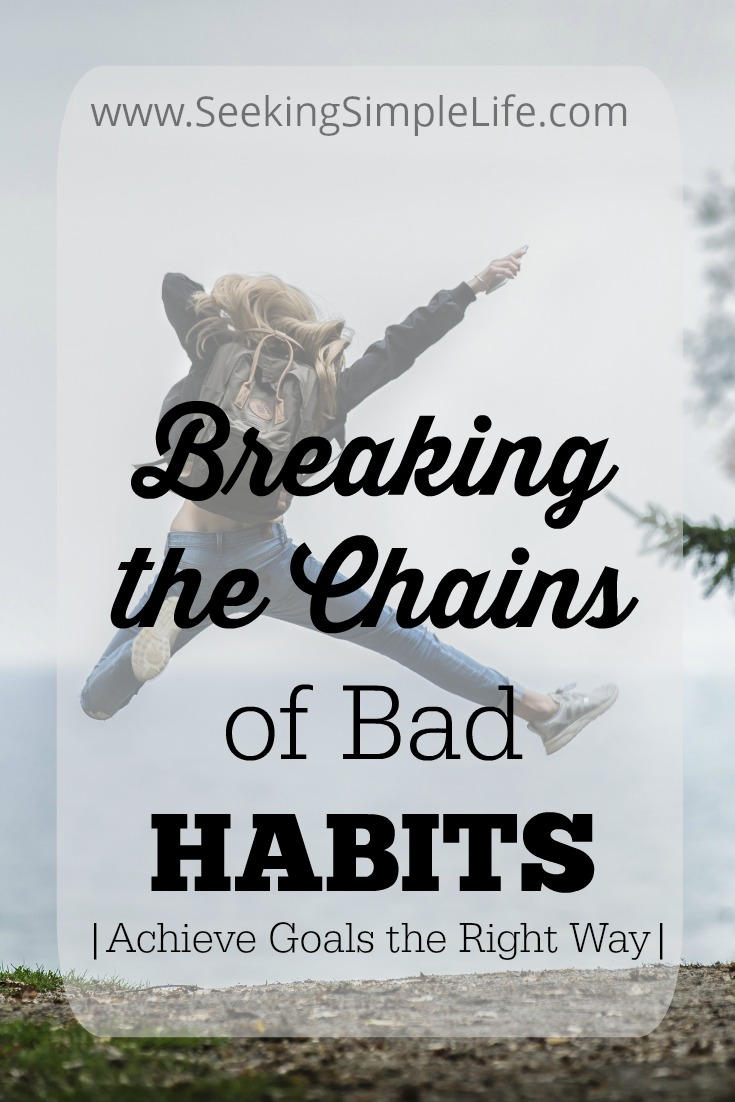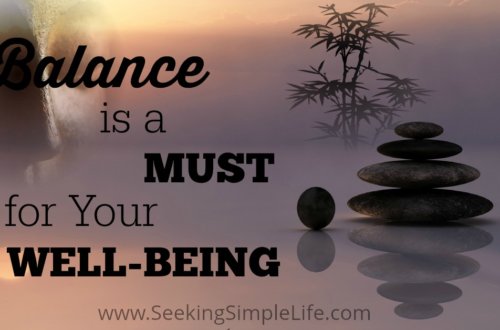
Breaking the Chains of Bad Habits | Achieve Goals the Right Way
Bad habits are a pain in the backside when we try to achieve goals; making it hard to succeed. We blame ourselves for a lack of willpower or determination. What if it wasn’t a lack of willpower or determination? This refreshing method for breaking the chains of bad habits helps us achieve goals the right way.
This post may include affiliate links. I only recommend products that I love. All opinions are genuine. Any purchases made don’t cost you any additional money but help me earn a commission. Thank you for helping a girl out! Please read the Disclosure and Privacy Policy for more information.
This topic is a sore spot for me personally. Do You Habit? The Power Of Facing Your Habits by Live Optimized was downloaded to my Kindle YEARS ago (love.my.kindle, but I digress).
I didn’t read it until recently!
Shoulda, coulda, woulda’s are hitting my forehead right now.
I wasted years of struggling through habits, beating myself up for having a lack of willpower, or not having enough determination.
This book has changed the way I think about bad habits. I even used the method with my daughter recently and it helped her, but more on that later.
This article will provide the nuggets that I personally got out of the book. I’m curious to learn how they resonate with you, don’t forget to leave a comment below.
What is a Habit?
When you think about habits you automatically think of the long list of bad habits you struggle with. Let’s turn this around. Habits are any actions we do subconsciously throughout the day.
- making coffee
- brushing teeth
- getting dressed
- making lunch
- bedtime routines
- doing dishes
It is natural for our brains to create habits out of tasks that are repeated over time. If we had to think about every single action our brains would explode, and we would be more tired than we are already. Thank goodness for habits!
[clickToTweet tweet=”‘Habits are perfected over years of practice and repetition to the point that often times they are done subconsciously.’ – Live Optimized” quote=”‘Habits are perfected over years of practice and repetition to the point that often times they are done subconsciously.’ – Live Optimized” theme=”style2″]
Live Optimized, calls habits patterns of learned behavior. These learned behaviors are pathways (patterns) ingrained in our brains. The author used the analogy of a dirt pathway that has been created over time. Grass no longer grows on it. It exists because it was the pathway taken repeatedly.
These pathways are the learned behaviors of our brains. It is easier for us to subconsciously follow these paths than go down a different path.
Breaking the Chains of Bad Habits
When we think of habits as learned behaviors then we can start to see why trying to achieve a goal was so difficult. How do we break the chains of bad habits?
Emotions Matter
Let’s talk about the true root of why learned behaviors are created, emotions. When you look at each learned behavior the emotional feelings you get from doing that learned behavior are what drives you to repeat it.
Live Optimized used the example of feeling overwhelmed by debt but still buying a shirt that was on sale. You couldn’t resist! It was super cute, and the price was to die for! You looked AMAZING in it! Who cares that your closet is overflowing, or your bank account is going to hate you.
At the moment you felt powerful, important, and rode the high of finding a great deal. Then the reality sets in and you are overcome with guilt for buying something you really didn’t need and adding more debt.
The learned behavior is created by the first feelings of power, importance, and the high of finding great deals.
Create a New Pathway
The only way you can stop following that old pathway of learned behavior is to create a new positive strategy for avoiding that pathway. Live Optimized used an example of using a fence to stop the old pathway from being used; ultimately giving the grass a chance to grow back again.
I highly recommend a journal to help you get honest about the habit you want to overcome. The journal will also help you track what is working and what triggers created some obstacles for you.
(I know time is valuable for you. Save this article to Pinterest for later.)
Step 1. Name it!
Be honest about the habit you want to change. Name the habit and answer these questions:
- How is it harming your life?
- For how long has it been happening?
- How does it affect those around you?
- Why do you want to change it?
Step 2. Brainstorm
Brainstorm ways to change the pattern. Your goal will be to create new positive pathways that will help redirect the old pathway.
- What positive intentional distractions can you use to help avoid the typical path?
- Look for triggers from recent events. Triggers can be trickier to overcome but not impossible.
- Make a list of positive uplifting activities that empower you or relax you. These are potential distractions to help you on your journey.
Step 3: Your Person
Finding your person (Grey’s Anatomy fan – sorry) is important to help you when temptation sets in. There are reasons Weight Watchers and AA use support groups. Breaking the chains of bad habits is not easy. You will need someone to help you keep it real. Here are some things to consider:
- Be aware of negative self-talk. Slip-ups happen.
- Remember you only have control over how you react to a situation.
- Emotions are natural to the human personality.
- Seek out a support system: friends, family, community support group.
Step 4: Track-It!
Track your progress in your journal. Capture what is working, what triggers created challenges, and what isn’t working for you. If it isn’t working then make another small change that will help you, test it out, and keep going. Find what works and continue creating that positive pathway.
Celebrate the wins. Track the number of days and reward yourself. Choose a positive reward to help weekly wins, 30 days, 60 days, and 90 days of working toward breaking this bad habit. Keep going until the new habit becomes subconscious.
Testing the Method
Our daughter’s passion is dance. She is a highly motivated person that shows determination in really anything she does, whether it is school or dance. Honestly, she inspires me most days. My point? She is one of the most determined people I personally know, but even she has bad habits.
There is one BIG goal that she has been frustrated about. She has struggled with it for years, so we had a chat not long ago. It started with me asking her what her next goal was going to be.
She wants to improve her turnout so it comes naturally. Even though she is close to getting it, she confessed that she can only hold it if she is thinking about it. Then she loses focus on the other moves that she needs to do.
(I don’t have a hot clue about how to fix this problem for her. I’m not a dancer!)
We talk about how she wants to be able to achieve this goal in time for her dance exam in June. Ummm, a little over a month to have success. I asked her what would help her improve muscle memory, so her body naturally knows to stay in that position.
She told me there are exercises she can do to help. She does them before dance class already but doesn’t do them at home.
BINGO!
When she set a goal to get on pointe shoes she did those exercises while brushing her teeth while doing dishes, and while watching television. I used that example and we came up with a plan to help her do the turnout exercises in the evenings.
She wasn’t achieving her goal because she had a learned habit of avoiding the exercises, even though her teachers had encouraged her to do them at home.
The Turnout Analysis
As we talked, I realized that her goal was difficult to achieve because she needed to break her bad habit. I asked her the questions in Step 1:
- How is the turnout affecting her dance? As I advance in dance I may injure my knees and ankles, and it makes my dance positions look sloppy.
- For how long has the turnout been an issue? Over 5 years (since before I knew about turnout).
- How could your turnout affect those around you? My team may lose marks in competitions if my turnout isn’t good. If I get hurt because of my turnout, then they are down a dancer and this affects the choreography. I don’t want to disappoint or worry about my friends, family, or teachers.
- Why do you want to change the way you do turnouts now? I have to think about my turnouts while I’m doing them. If I stop thinking about them then my turnout gets sloppy. If I’m thinking about the turnout then I lose focus on other moves and mess up elsewhere. My turnout needs to be natural.
Our daughter’s learned behavior (habit) was to avoid the exercises at home. She had told herself that doing them at dance class was enough. Her emotion driving this was sheer muscle relief. After all, the exercises include pilates and they are painful when you are in training.
We named the bad habit (avoiding the exercises), discussed how it affects her life, and brainstormed ideas for adding them to her evening routine. She saw what was holding her back and how she can achieve her goal.
Does she enjoy the exercises now? Not at all! However, our son has a saying he used to get through Basic Training, #embracethesuck. She’s using that little nugget and a foam roller for muscle relief. By using this method she continues breaking the chains of bad habits.
What habits are you wanting to break?
Before You Go!
WANT TO REMEMBER THIS? SAVE BREAKING THE CHAINS OF BAD HABITS TO YOUR FAVORITE PINTEREST BOARD!









2 Comments
Reese Evans
I read your content. Very nice. Your content is very informative.
Breaking the chain of bad habits is very important to the content that you are writing about the right way to achieve the goal.
Jacquie Ellis
Thank you for the kind words!